COINCIDENT TECH.
TURBO 845 SE INTEGRATED AMP
thehighfidelityreport.com

“The height of cultivation always runs to simplicity.”
~ Bruce Lee
Before I began my audiophile journey, all I knew were cheap integrated amps and inefficient box speakers (along with lo-fi boomboxes and headphones). Then things changed. I met Harry Pearson and spent close to a decade listening to the magical (and massive) systems that filled the rooms at Sea Cliff. Digesting sound from the world’s finest was a daily habit and I was hooked. Suffice to say, at HP’s audio palace, integrated amps were not the norm as I was educated on the sonic benefits of separation.
Although my association with Harry Pearson (HP) led me down a path of staggering audiophile madness, I was always eager to find equipment that sounded great at “non-stratospheric” prices. Mainly, because I want to own great sound myself and, not to mention, be able to recommend something my friends could possibly afford. So given my current living and financial situation, I find myself on the hunt for an amazing integrated amplifier.
An integrated amplifier offers many advantages. First, there is the space saving nature inherent in only having one unit. Secondly, you save a pair of interconnects and at least one power chord (two, if we’re comparing to owning monoblocks). Third, an integrated is easy to use. To a seasoned audiophile, running a system comprised of multiple components is a no-brainer. But see if you don’t break a sweat when your friend, crashing at your place while you’re out of town, calls you up asking how to get sound out of your speakers.
Yet what I’m truly looking for is an integrated that is uncompromising. Not only do I want “bang-for-my-buck” in a small footprint, but also a component that will provide the performance and sonic abilities that High End audio has shown me is possible. Understandably, most integrated amps are designed for the entry-level crowd, but there has been a movement of late to develop more capable designs. And the focus of this review, the Coincident Turbo 845 SE, is such a component.
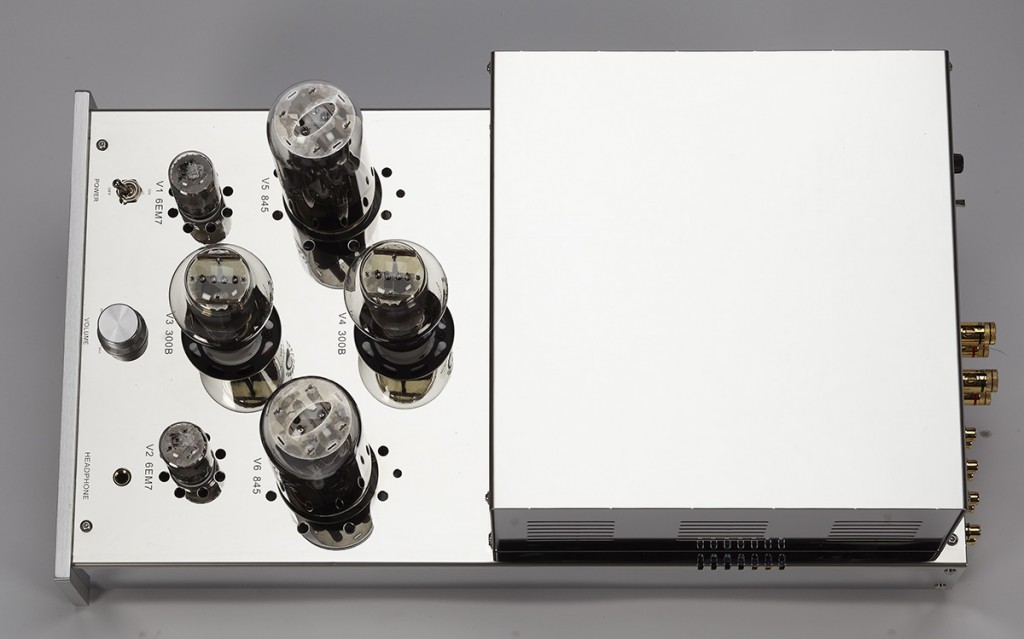
Coming in just shy of $6k (actual price: $5999 USD), the Turbo 845 SE is a true dual-Mono integrated amplifier. This means that the only thing the two channels share is the chassis and the IEC power connector – everything else is completely separate, including the dual toroidal power transformers. As the name implies, the Turbo 845 SE uses an 845 triode as the output tube (surprise!). The 845 uses a bayonet mount – so make sure you pay attention while inserting the tubes to ensure proper fit (it should lock in when properly installed). 845's are a great sounding tube, with a liquid midrange that somehow manages to never sound overly “warm”. It doesn’t sound as “tubey” as the 300B (I know, I know), but it packs a serious punch. Coincident ships the Turbo with the affordable Psvane 845. These tubes are quite tall with a height of roughly seven and a half inches. They also get hot, especially if you are listening for hours at a time, so although you only need one shelf for the Turbo, you must allow for some breathing room at the top (give yourselves a space with at least 14 inches of height). Of course, the Turbo is so impressive you will most likely display it on the top shelf anyway.
As for what the Turbo looks like, here is what my good friend Chris Sommovigo had to say: “That thing looks so dead sexy that if it didn’t sound good I’d have to punch Izzy [Israel Blume] in the nose.” Exactly. The turbo has a refined look, brought upon by the polished stainless steel finish that has become the trademark for all Coincident amps. When friends used to visit, they would always comment on the turntable. It’s real pretty. Now they just walk up to the Turbo and gawk at it. I’ve had more people ask me about this amplifier than any other component I’ve had in house. Aesthetically, it’s a sleek and machined build that serves to highlight the array of large tubes glowing on top.
The Turbo uses a pair of 300B’s to drive the 845’s and uses a pair of 6EM7 for input. The dual mono design is hard wired and features auto bias to keep the tubes in check. The Class A design provides 28 watts per channel, so you need to match speakers accordingly. Thanks to the large power supply (storing a whopping 510 joules) and the massive transformers, the Turbo weighs in around 100 lbs.
The Turbo comes equipped with three pairs of unbalanced RCA inputs (unlike it’s younger brother, the Dynamo, which has only one). It has a pair of speaker outputs and one pair of unbalanced RCA inputs that bypass the line stage, thus, making it possible to use the Turbo as a standalone amp. All these connections are located on the back of the amp. There is one input located on the front of the amp, a ¼” headphone jack (which is set at 300 ohms but can be changed if one so desires). Yeah, the Turbo has a secret weapon: A mind-blowing headphone amp. This makes the Turbo a three-for-one machine.
Located on the top of the amp are the on/off switch and volume control knob. I was hesitant about the placement of the volume knob at first, being so close to the tubes and all, but the old-school dial grew on me. And now I feel great turning it up like a mad scientist next to those glowing tubes. There are buttons located on the faceplate to mute the amplifier and to change inputs. When turned on, the amp always restarts on mute. And for safety reasons, the volume knob is always reset to zero, regardless where it was when you turned the amp off. Included with the Turbo is a basic remote control to change inputs, mute, and adjust volume (oddly, the volume buttons are reversed with the “volume down” button located on top of “volume up” – this caused some minor confusion the first few times through).
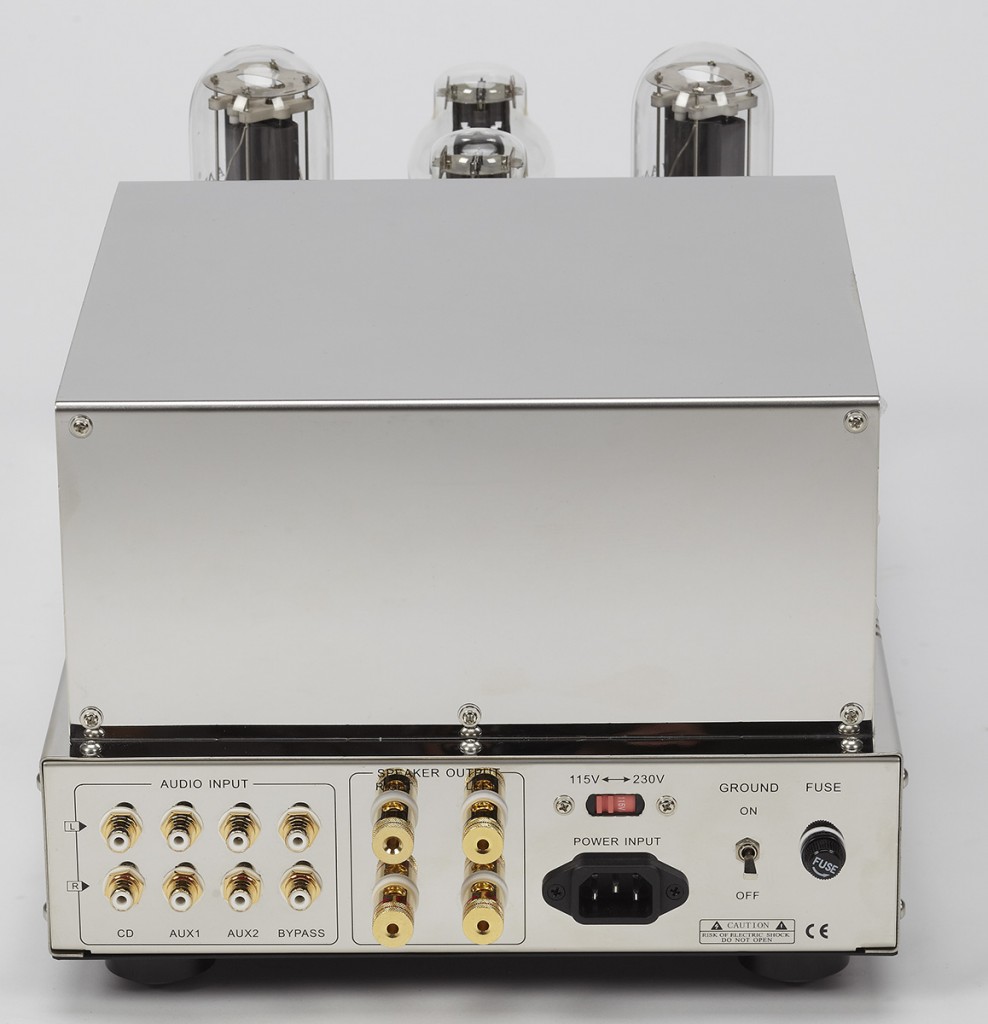
If you assume that Blume designed the Turbo (and it’s little brother, the Dynamo) to drive his own speakers, you would be correct. Coincident Technology began in 1993 as a speaker manufacturer and makes highly efficient speakers. In 2001, Blume decided he wanted to design the “best amplifiers possible”, so that he could hear his speakers reach their full potential. Thus, began the expansion of the Coincident line which now includes amplifiers, phono preamps, line stages, cables and interconnects. Thankfully, the decision to manufacture such a diverse line was borne from a desire to achieve better sound instead of a quick way to make more money. So even though you don’t need to own Coincident speakers to enjoy the Turbo – there are many speakers that will fit the bill – you can’t go wrong pairing the two.
According to Blume, when designing the Turbo he sought “harmonic completeness with transparency, and weight, impact and a massive soundstage.” Apparently he thought he could achieve such top-echelon characteristics with an integrated amp clocking in at $6k? Turns out he was right. As many months of listening attests, the Turbo delivers on such lofty promises and while doing so, happens to shatter my previous assumptions of what an integrated can do.
The first thing you will notice is the richness on display with the Turbo. Like Blume’s other amps, the Turbo maintains an ability to procure the essential qualities that allow recorded sounds to be transformed into cohesive music. This ability is apparent in components I favor most: To provide the sonic signature of each recording, and thus, each sound, with a completeness of texture and space. This is no easy task. Just listen to any High End amplifier touted as having “outstanding detail” and you will most likely miss out on the special sauce.
Like the Coincident 211PP Dragon amplifiers – their flagship amplifier design – the Turbo maintains a neutral yet exciting clarity that makes other integrated amps seem lifeless and dull in comparison. Or perhaps it is easier to say that the Turbo brought unexpected amounts of excitement to my LP collection. Even HP himself was surprised at what the Turbo could do. Listening to The Weavers (Live at Carnegie Hall), HP leaned over to me and exclaimed: “This can’t be an integrated amplifier. Just listen to the natural separation of the voices across the stage. There is so much depth to the sonic space that I can practically touch the Hall itself.” After we ran through a few hours of Classical LPs, HP noted that: “the sound of this amplifier is impressive in that it keeps up with the music with such grace.”
There are sonic presentations that force themselves upon you and there are those that draw you in. The Turbo leans toward the latter, as it presents a sound that commands your attention without attacking your brain. This comes across brilliantly on dynamic recordings. Listening to the 33rpm Music Matters mono reissue of John Coltrane’s Blue Train, the sound is just explosive. This is an LP that has been reissued far too many times, but one listen to the Music Matters on this system and you will understand why it just doesn’t go away. The thickness of Coltrane’s horn will knock you flat and the sound is so present that it gives me the shivers. (These are the kinds of feelings that spending money on audio equipment should elicit.) The sound takes on a full-bodied presence, providing you with the best of what tubes have to offer, yet without any compromise in clarity or transparency.
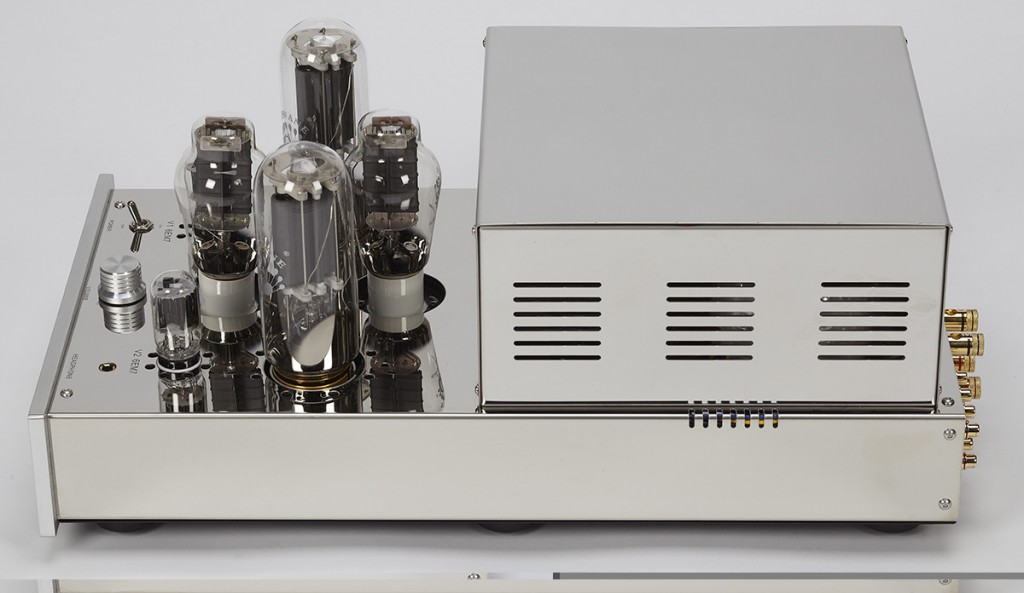
An amplifier like the Turbo is definitely not for everyone. Low wattage tube amplifiers need be driving efficient speakers and room size needs to be taken into consideration. You can forget about driving your Maggie’s with the Turbo. Although only outputting 28 watts, the large power supply and 1000 Volt operation allow for the Turbo to drive a large variety of speakers ranging from around 84db sensitivity and up. And paired with the right speakers (Zu Audio, Coincident, DeVore Fidelity, the list goes on…), the Turbo should keep you more than satisfied (the Nola KO’s easily filled a 40’x30’ room without breaking a sweat). The Turbo also gets hot, so you need to keep that in mind when it comes to placement, operation, and the changing seasons (it’s comforting in the fall and winter, but be wary of sitting next to the amplifier during the dog days of summer).
It makes sense that I find the Turbo to my liking. I found the monoblock Dragons to be a stellar all-around amplifier and the two designs have much in common (same power supply and chassis). The Dragons, of course, are able to drive larger speakers and produce louder sounds with more purity. Yet for all the limitations one would assume of an integrated – weak dynamics, collapsed soundstage – the Turbo somehow sidesteps such ill-fated attributes. Thankfully, the pure dual-mono design allows for improved instrument staging (the hallmark of dual mono design). I’m not sure if it’s the large power supply or the huge transformers, but I was never left wanting when it came to dynamics, soundstaging, and most of all, tonal accuracy. Then again, I tend to listen to all sorts of music. So if you plan on blowing your ears out to the Firebird every time you turn on your system, then maybe you should look elsewhere.
Since each channel of the Turbo is basically independent (the channels only share the power supply and the chassis), instruments easily appeared with defined space. I’ve been listening to a lot of Haitian drumming recordings lately and the Turbo (along with the NOLA KO’s) reproduces the intricate patterns with speed and accuracy. Many of these recordings feature hand drums and vocals recorded in an outside setting and with the Turbo I am able to not only hear the musicians in their proper placement but the recorded atmosphere itself. And the rhythms of the drums are easily heard as individual parts, although never unnaturally separated – as it should be. There is a wholeness that is essential when replicating live music. Please note that when using the Turbo as a standalone amplifier, the same results were achieved.
Unfortunately, to these ears, many modern amps are aimed to extract information from a recording with microscopic precision. “Analytical” is the word. Now, I’m all for trying to get everything possible from a recording – one of the absolute goals of high end audio – but not at the expense of the natural soul inherent in music made by humans. I’m confident to report that the Turbo (like all of the Coincident designs I have heard) could never be considered analytical sounding. Not even close. The Turbo is a soulful design. It still provides accurate instrument separation and a heaping amount of sonic clarity, but the music never appears picked apart or dissected. The one thing you will always be keenly aware of is the astonishing amount of “feeling” that this bad boy is able to muster out of the music.
Most people who purchase an integrated place it in their main rig. Therefore, such a device will need to be flexible for use with many different sources. The majority of my listening deals with vinyl, but the Turbo resided in our main room and took on the job of streaming digital audio, Blu-Ray, and TV. My only gripe concerns lengthy listening sessions or movie marathons: The tubes get hot! And although there are three inputs, I was actually left wanting one more (this is due to my current set-up, as I have four sources). Also, if using in a home entertainment system, you might not get the earth shattering volumes some movies or shows desire (unless, of course, you pair with powered woofers).
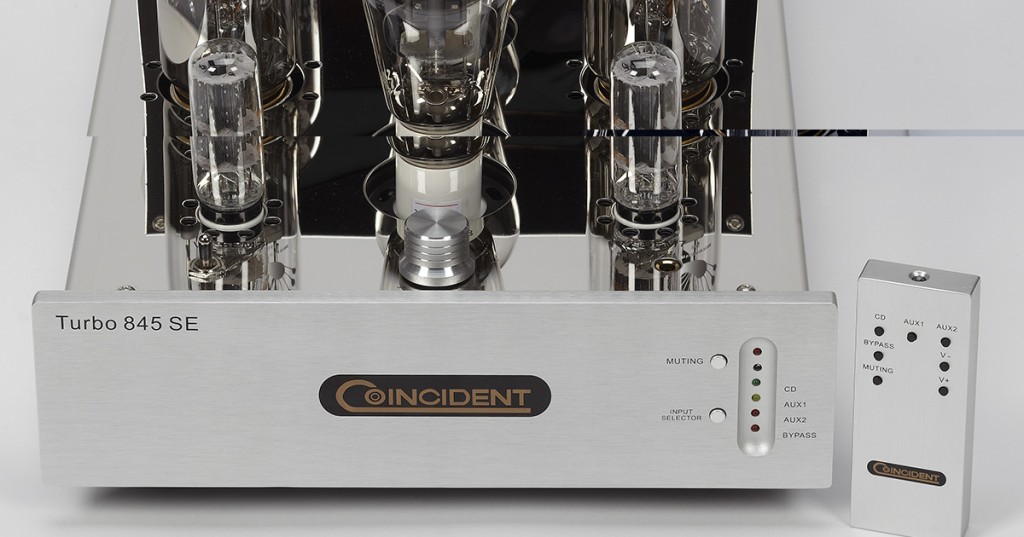
Like the Dragons, the Turbo provides a big, tight bottom end. On Orchestral recordings, the lower registers come through with definition and power. The opening cello and double bass on the second movement of Lieutenant Kije [RCA LSC-2150] are heard with a sultry growl yet the staging of the individual instruments is clear enough to hear the players enter in their own space. And if you own the now-rare MOFI reissue of Beck’s Sea Change, do yourself a favor and listen to it with the Turbo (or the Dragons). Beck’s voice glides through with uncompromising prowess while background instruments are delivered with a real sense of harmonic richness and natural tone. There should be no muddiness to this recording and with the Turbo it was clean and defined.
I don’t know how he did it, but Blume designed an integrated that can compete with much more expensive systems. I played it against the Audio Research REF-75 paired with the Veloce Audio LS-1 Linestage (combined price: hovering around $35k) and although the Turbo didn’t have the same amount of clean power or headroom on larger ensembles, it was hardly left for dead. Where the REF-75 brought upon incredible detail and pristine instrument staging, the Turbo challenged with a richness and depth to the sound. On the Analog Productions reissue of Night Beat, by Sam Cooke, the Turbo easily brought out Cooke’s voice, which never wavered from focus. The Turbo’s finest qualities rally around macro-dynamics, clarity, and richness of tone.
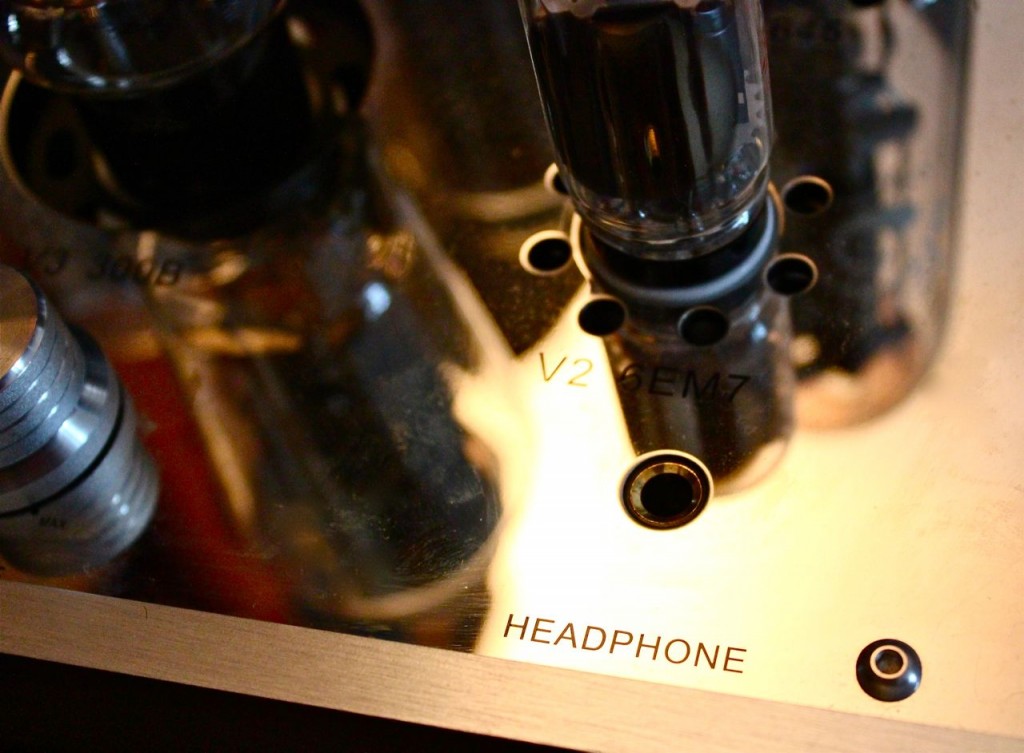
WORLD CLASS HEADPHONE AMP…
For the past year I’ve been traveling further down the path of personal audio and what is out there has gotten me excited. Yet nothing I have heard has been more developed in sound than the combination of my Audeze LCD-3’s and the Turbo’s headphone section (perhaps the Cavalli gear could be in the running).
I have found that the proper reproduction of space to be quite elusive in headphone playback. In fact, many headphones (and headphone amps) will instead relate an illusory sense of space. That being the case, the Turbo provided ample soundstaging coupled with richness to the instruments (especially in the midrange – on vocals and strings, to be exact). And the sound is deep. The 845 tubes provide a thickness of tone without sacrificing any clarity or dimensionality – a most difficult task.
As mentioned earlier, the Turbo’s headphone amp is accessed with an unbalanced 1/4” connection located on the front faceplate. Once plugged into the headphone jack, the speaker output is muted, therefore sound will only come through the headphones. The headphone output is set at 300 ohms but can be changed (this will require soldering skills as there are two resistors on the headphone board that can be unsoldered and exchanged to any value from 100 ohms and up). Using the headphone amp, the Turbo’s output drops to 20 watts, which is more than enough for basically any headphone you can find. Volume of the headphone amp is controlled with the knob on the amplifier or via remote.
From the first moment I plugged in my Audeze LCD-3’s, I was floored by the sound. I’ve been spending a lot of time with headphones these days (I recently co-founded a headphone enthusiast website with Chris Sommovigo and Frank Iacone: Headphone.Guru) and although I’ve auditioned many High End headphone amps, none rivaled the sheer power and body of the Turbo. Each and every sonic texture was relayed with a depth that is difficult to achieve with headphone playback.
 Instrument spacing was exquisite. Listening to Max Richter’s recomposed Vivaldi: The Four Seasons on Deutsche Grammophon, the strings were perfectly placed across the sound field. The staging was no longer muddy and choppy (as experienced with other amps), but the placement of the instruments, along the space of the Hall itself, was relayed with a continuousness that captured a natural depth and timbre of each and every note rising from the violins. The heart-wrenching textures orchestrated by Richter were truly captivating coming through the headphones.
Instrument spacing was exquisite. Listening to Max Richter’s recomposed Vivaldi: The Four Seasons on Deutsche Grammophon, the strings were perfectly placed across the sound field. The staging was no longer muddy and choppy (as experienced with other amps), but the placement of the instruments, along the space of the Hall itself, was relayed with a continuousness that captured a natural depth and timbre of each and every note rising from the violins. The heart-wrenching textures orchestrated by Richter were truly captivating coming through the headphones.
The Turbo easily drove the LCD-3 (granted, not an extremely difficult headphone to drive) and I was never left wanting for headroom or power. Dynamics were excellent. On the classic 45rpm pressing of “St. James Infirmary”, the LCD-3 (using the Nordost Heimdell 2 cable, whose extra long length allowed me to listen at a comfortable distance from the amp), Louis Armstrong’s voice came through with life-like presence. Of course, the instruments being hard-panned, this is not the most fluid recording to hear on headphones, but having experienced this track countless times on ultra-High End sound systems, I must admit that the Turbo/LCD-3 combination allowed the vocals the fluidity and power that I’ve grown accustomed to.
On the legendary RCA recording of Bartok’s “Hungarian Sketches” [LSC-2374], the Turbo helped the LCD-3 to reproduce an accurate depth of space. This is usually a tough task for most headphones, including the LCD-3 (I have found all headphones for that matter, have a real difficulty achieving any sense of spatial accuracy on live recordings. What makes matters worse is when you compare with the presentation open speakers provide in this capacity.) Yet through the Turbo, the LCD-3 was able to slightly open the door to the Hall as I could hear distant overtones and reverberations at play. The amount of pure power flowing from the Turbo allowed the LCD-3’s an effortlessness that is difficult to achieve in personal audio. Judging from my listening sessions, the headphone community would be blessed if Coincident ever develops a standalone headphone amp.
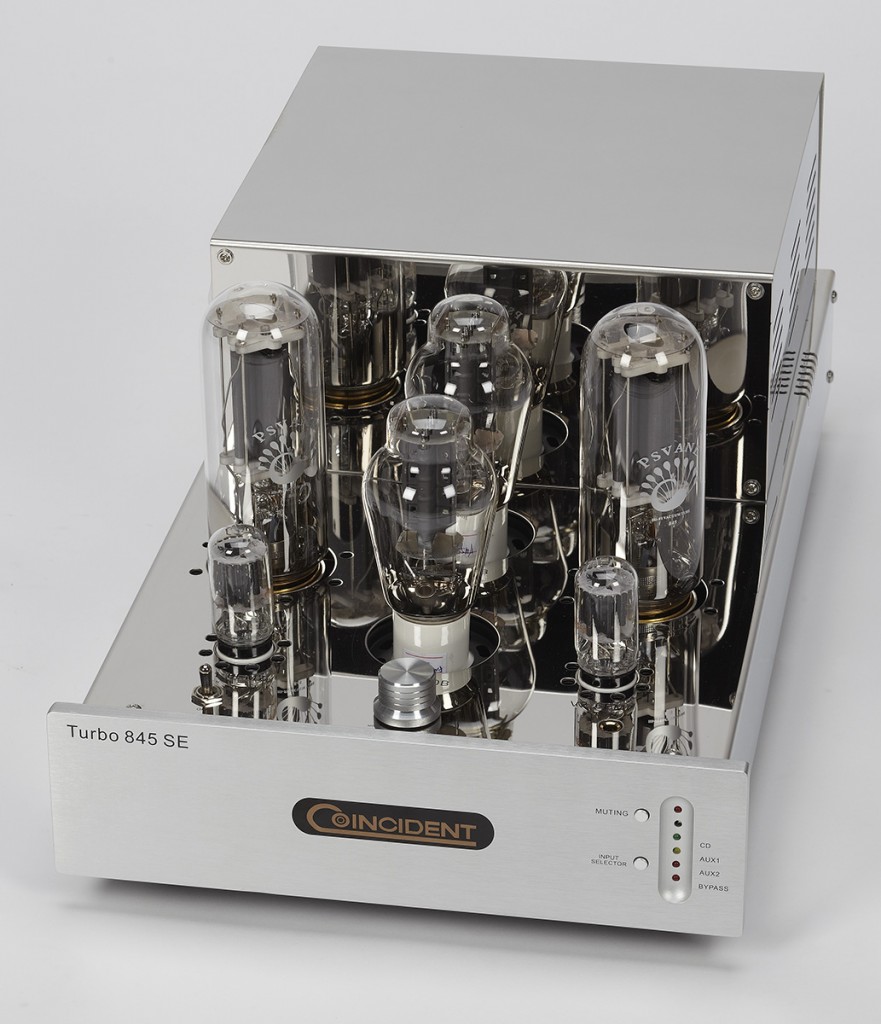
Conclusion…
Like many people, I am all about seeking out over-performers. Be it wine, audio equipment, restaurants, hotels, the fact is always the same: To get your money’s worth and then some. And this is a search that is directly related to and reflected by one’s sense of taste and quality. Yet in the world of High End audio, stratospheric pricing has allowed for misguided perceptions of taste and quality, especially when it comes to performance vs. price. For what it provides, Coincident could have easily charged more for the Turbo. Whereas the Dynamo can be considered audiophile “bait” – allowing the price-conscious music lover the opportunity to procure better sound – the Turbo should be considered a long-term investment in quality sound.
To date, this is the finest integrated amplifier I have experienced. Providing such impressive sound at this price is a real accomplishment. You would be hard pressed to find a better way to spend $10k on audio equipment and the Turbo costs $5999. On my search for an uncompromising integrated amp, the Turbo is currently the one to beat.




![]()




![]()